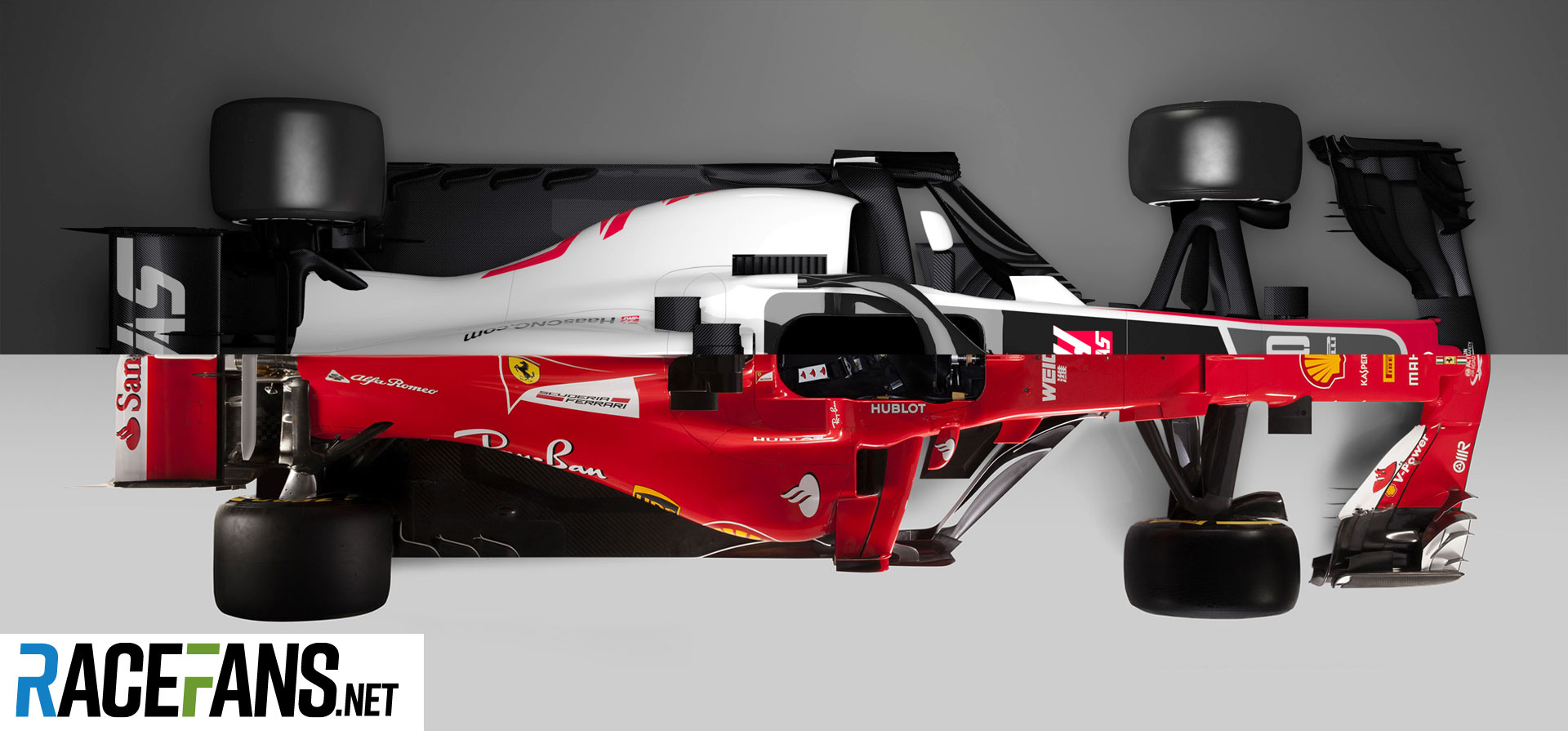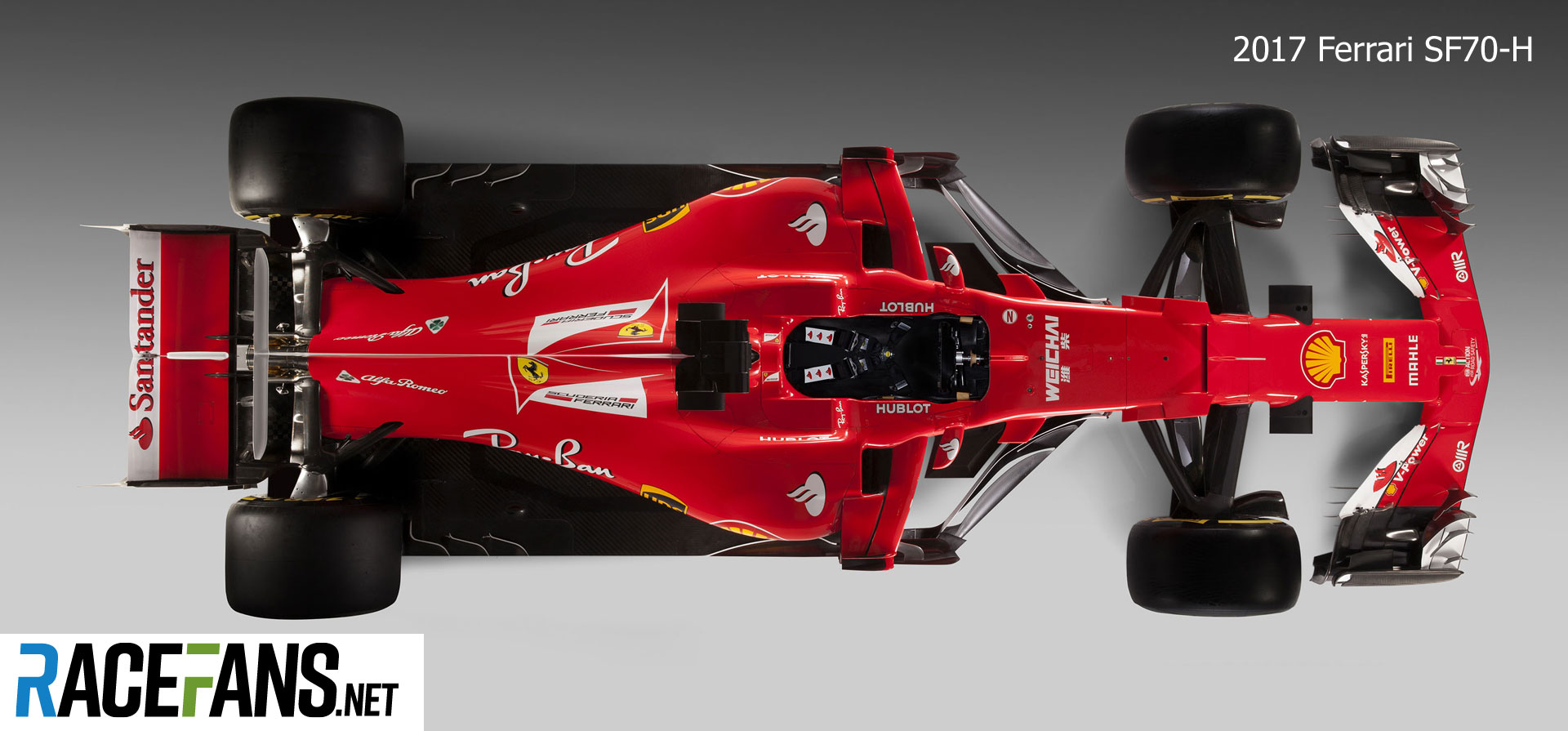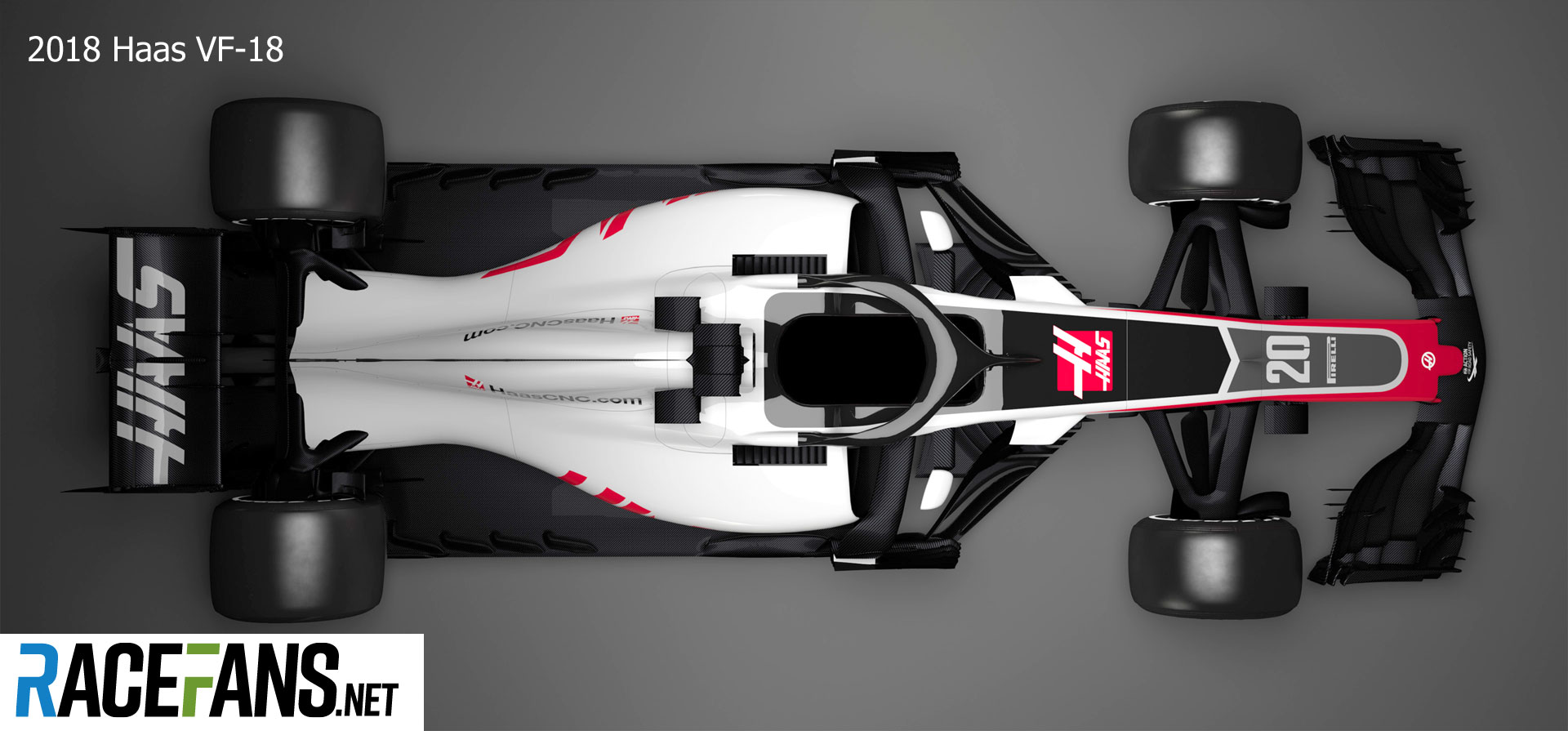When Haas arrived in F1 two years ago it had the advantage of being able to lean heavily on technical partner Ferrari for many of the components which went into its first car, the VF-16.
Last year’s significant overhaul of the regulations presented a particular challenge for this team as it wasn’t able to follow Ferrari’s lead as closely. Nonetheless it tackled the big aerodynamic rule changes admirably and repeated its eighth place in the constructors’ championship.
Go ad-free for just £1 per month
>> Find out more and sign up
The team must now tackle the inevitable rise of the likes of McLaren and Sauber this year if they are to remain a midfield contender. But as the technical rules have largely remained stable it can once again make full use of the strength of its connection with Ferrari. Unsurprisingly, there’s a lot of SF70-H about the VF-18.
From the initial renders the VF-18 appears to be a solid evolution of last year’s car, furthering some of their own concepts while adopting a few ideas from others. Behind the scenes there will have been work done to their braking system, which was a repeated source of frustration particularly for Romain Grosjean. However it won’t be until winter testing – possibly even the first few races – that we will learn if they have finally mastered this complex and vital area of the car.

The images do, however, let us know what the fundamental concepts of the car are and what is happening aerodynamically. It is no surprise to see push-rod and pull-rod actuated front and rear suspension respectively (above). A basic aerodynamic fairing surrounds the mandatory new Halo. At the rear, the engine cover occupies a lot of the revised regulatory area following the ban on ‘shark fins’, this is to add as much side force as possible to the car on turn-in.

Key changes to the Haas start at the front. The front wing, visibly different to the one Haas ended last year with, borrows a lot of design cues from last year’s McLaren to produce downforce and control the air over the car. Its upper flap elements are intricately designed at the Y250 intersection to shape the crucial vortex that sheds there.
This is accompanied by a revised nose design: the thumb-tip tapers to the car centreline rather than merging into the bulk of it.
You can compare the new design to the car Haas introduced 12 months ago here:

Further back we start to see Ferrari influences. The under-chassis vanes that infiltrate the back of the nose to capture as much airflow as possible ahead of the barge-boards are an almost direct copy to those on the 2017 prancing horse.
Advert | Become a RaceFans supporter and
The complex sidepods with their high leading edge and multiple inlet channels would have been a big challenge for Haas to replicate, as the side impact structures need re-positioning which makes the crash tests harder to pass – there is clearly significant benefit in this design. These are joined by an evolution of their sidepod deflectors from last season: these are big bits of bodywork which extend forward to intercept the front tyre wake, and the louvred design reduces the induced drag.
The car is capped off by a split airbox design, which is an efficient way of feeding the power unit and other coolers without compromising the design of the sidepods. At the end of the engine cover is a lower T-wing which replaces the similar element lost due to the reduction in size of the ‘shark fins’.
But as with the other nine cars due to be launched over the next two weeks, expect to see more updates arrive for this car during the pre-season tests and in time for the first race of the year.
Interactive: Compare the 2018 Haas VF-18 and 107 Ferrari SF70-H
2018 F1 season
- McLaren staff told us we were “totally crazy” to take Honda engines in 2018 – Tost
- ‘It doesn’t matter if we start last’: How Red Bull’s junior team aided Honda’s leap forward
- Honda’s jet division helped F1 engineers solve power unit problem
- McLaren Racing losses rise after Honda split
- Ricciardo: Baku “s***show” was Red Bull’s fault





 ”
”
Damon (@damon)
15th February 2018, 12:31
I miss the times when each new car was drastically different than the previous year’s car, each new car showcased some radically different new design and new aerodynamical philosophy. Today, the engineers have arrived at pretty much the ultimate solutions to all questions that used to be answered in all kinds of imperfect ways. Well, the engineers have or computers have?
With the same perfect, final answers available to everybody, this century old technical race will soon come to its conclusion, ending with an inevitable draw.
Will Tyson (@willt20)
22nd February 2018, 17:54
It’s difficult to justify radical design changes unless there is a significant benefit in doing so simply due to the complexity of the cars. It’s much more desirable to take an iterative, evolutionary approach year on year.
As long as the regulations keep changing, there will always be a winner!
Shimks (@shimks)
15th February 2018, 12:32
I’m so silly excited at this time of year! I probably visit RF ten times a day, seeing if there are any updates.
Let’s hope we get some awesome colours on the grid this year. The controversial FI pink ended up being one of the best changes, I think, once we got used to it. I have my fingers crossed that the Sauber Alfa Romeo will sport a more glamorous paint job than what they sneak peaked us last year. And I hope McLaren go back to traditional orange.
I already like the look of the halo on the Haas. I know, am I mad? Let’s see if any team opts against trying to hide it away with black. I’m hoping at least one team links the halo colour up with their main body colour.
Steve Rogers (@yossarian)
15th February 2018, 13:29
As always great work on the technical analysis Will, they’ve definitely become one of my favourite parts of the pre-season.
But the main thing I’ll be taking away from this article is how much better the Haas livery looks when you crank up the brightness on the renders so far that the grey becomes white. Though maybe that’s just because I’m a Button fan and it reminds me of the old BAR design.
Will Tyson (@willt20)
22nd February 2018, 17:55
Thanks Steve
Armand Serpentier (@armandf1v)
15th February 2018, 14:54
They also have this lower t-wing (not that visible) like williams used last year, it could make some significant changes
Todfod (@todfod)
15th February 2018, 16:12
Imitation might be the best form of flattery, but this just feels like plagiarism.
Sensord4notbeingafanboi (@peartree)
15th February 2018, 20:17
I don’t think it’s that similar. I see a bit of everyone’s front nose and a bit of everyone’s sidepods a lot of Ferrari and a bit of Merc. In the end the cars are converging.